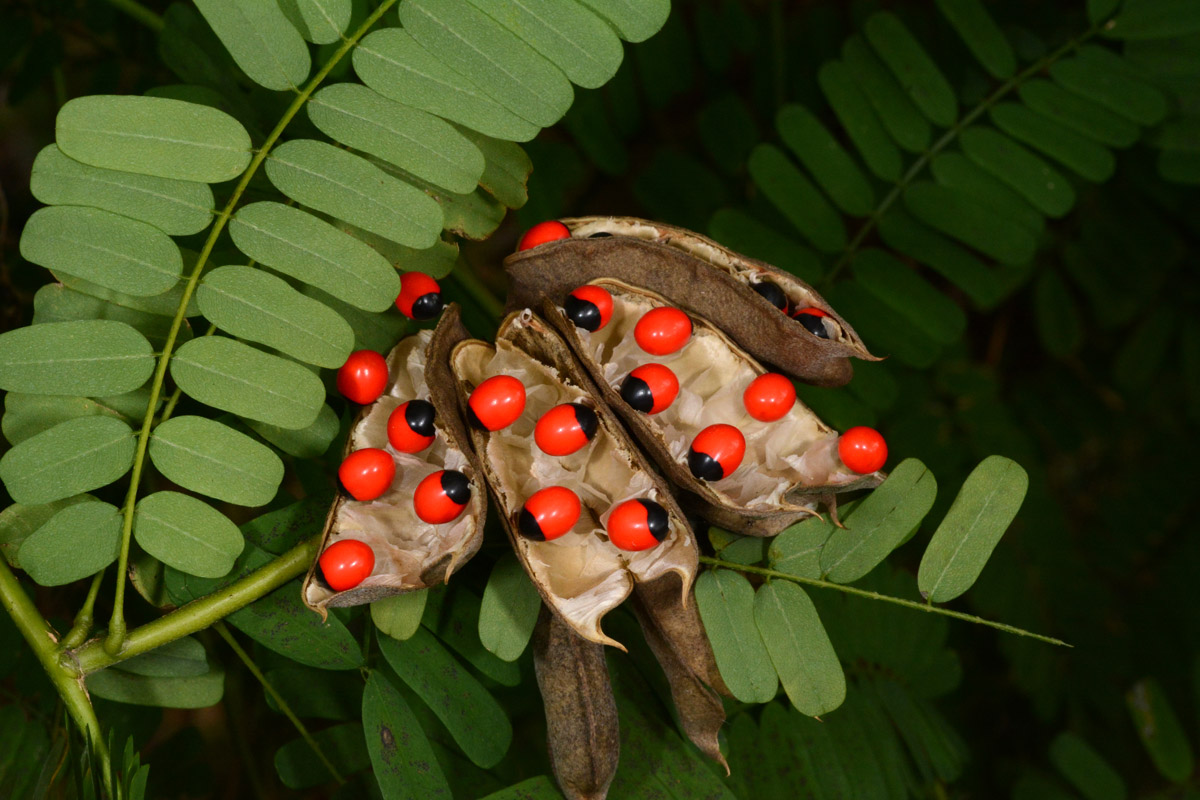Since the beginning of human civilization, herbal plants have often been used to cure various diseases. Herbal plants have been an ancient tradition much older than contemporary pharmacology, medicine, and chemistry. The World Health Organization reported that around 75% of the world’s population still uses medicinal methods derived from herbal plants. In addition, medicines from herbal plants are widely used because they are cheaper, safer, and have various pharmacological activities.
A. precatorius, a plant belonging to the Fabaceae family, has good potential to be used as herbal medicine. This plant is commonly known as Indian licorice, Crab’s eye, Jequirity, and Rosary pea. This plant is known as Gunja in Sanskrit and Ratti in Hindi. A. precatorius is native to India; however, it can be found in all tropical and sub-tropical regions around the world.
A. precatorius was first described as a medicinal plant by William Boericke in the Homoeopathic Materia Medica entitled Jequirity. This plant is traditionally used to treat cuts, wounds from animal bites, and several other diseases such as rabies, tetanus, and leucoderma. This plant is also effective in treating dysentery and diarrhea. In addition, this plant also shows efficacy as a tonic, aphrodisiac, emetic, and laxative. A. precatorius is believed to have various pharmacological activities such as antibacterial, antihelminthic, antidiabetic, and antitumor.
A. precatorius has anti-suppurative properties; the A. precatorius plant ground with lime can be used to treat acne and abscesses. Oral decoction of A. precatorius leaves can cure colds and coughs. The root of A. precatorius is useful for treating hemoglobinuric bile and jaundice. The root paste can be used to cure stomach aches, prevent abortion, and recover from tumors. The roots of A. precatorius powder mixed with pure butter can be utilized to cure coughs. The roots of A. precatorius can be utilized as medicine from snake bites by chewing. A. precatorius roots extract in hot water can be given orally to use as an anticonvulsant and anti-malarial. In addition, the liquid broth from the dried root of A. precatorius taken orally is efficacious for the treatment of bronchitis and hepatitis. A paste of A. precatorius leaves and seeds can be rubbed on the head for gray hair. Dry seeds of A. precatorius that are ground into a powder can be given orally to cure worm infestations in the digestive tract.
The bright red color of A. precatorius seeds attracts children’s attention, so there are cases when children in rural areas who do not have knowledge of the A. precatorius plant eat its seeds which are poisonous when consumed. Boiled A. precatorius seeds are often eaten by residents in several parts of India. A. precatorius seeds also have several active compounds that are a source of insecticides and antimicrobials. A. precatorius is considered a diuretic, expectorant, antidote, laxative, febrifuge, anodyne, aphrodisiac, hemostat, refrigerant, vermifuge, antimicrobial, emollient, vomiting reliever, sedative, laxative, and abortifacient. In addition, A. precatorius is also used to cure blennorrhea, cancer, colic, seizures, diarrhea, diabetes, night blindness, snake bites, conjunctivitis, fever, rheumatism, jaundice, gonorrhea, headaches, ulcers, gastritis, ophthalmia, malaria, and chronic nephritis. Soaked in hot water, A. precatorius seed extract can be taken orally to treat malaria. Dry A. precatorius seed powder is used by various African ethnic groups as a natural contraceptive. In addition, A. precatorius seeds can also be used to treat tuberculosis and painful swelling.
Author: Tridiganita Intan Solikhah, drh., M.Si.
Reference about article above:
http://jddtonline.info/index.php/jddt/article/view/5173
Khairullah, A. R., Solikhah, T. I., Ansori, A. N. M., Puspitarani, G. A., Anggraini, D. D., Posa, G. A. V. (2022). Abrus precatorius: A comprehensive insight into the phytochemical, pharmacological, therapeutic activities and safety. Journal of Drug Delivery and Therapeutics, 12(1): 151-157.





